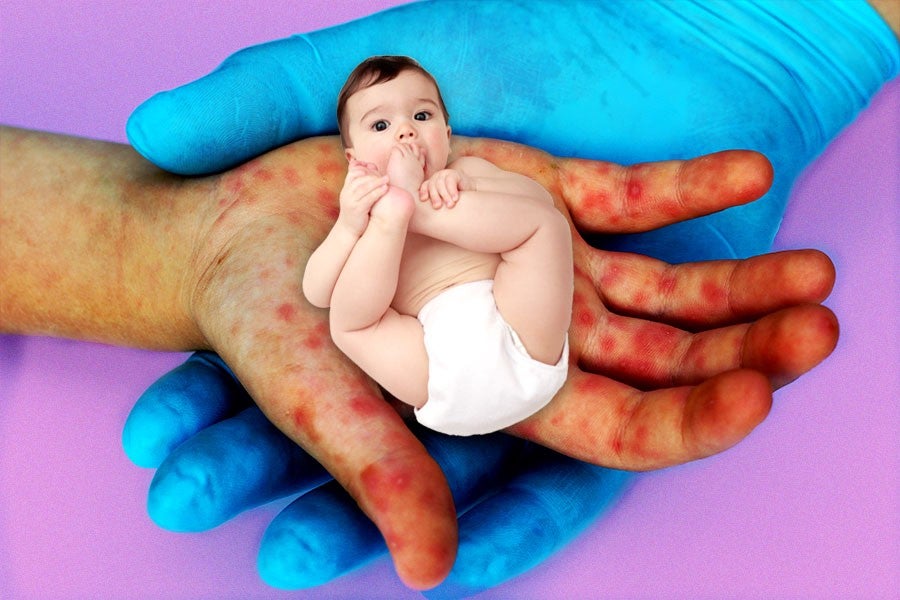Warning: Contains the phrase ‘oozing yellow gunk’ and other terms that you may find gross
Hand-foot-and-mouth disease (HFMD), aptly named since it affects your hand, your foot and your mouth, has been steadily making its way into the news of late. Last month, Yankees pitcher J.A. Happ became the second Major League Baseball pitcher afflicted with the disease, following reports that Mets pitcher Noah Syndergaard caught it after apparently visiting a children’s camp.
Additionally, doctors are seeing outbreaks in Indiana, South Carolina, Tennessee and Virginia, while just this week, KCRA reported that Sacramento area pediatricians are seeing an uptick in viruses among preschool and elementary school aged children.
What does this mean for you? It depends!
Now that we know that HFMD is having a moment, uh, what is it?
According to the Mayo Clinic, hand-foot-and-mouth disease is a mild, contagious viral infection that’s characterized by sores in the mouth and a rash on the hands and feet. Talking to CBS, Elizabeth Mack, an associate professor of pediatric critical care at the Medical University of South Carolina, explained that symptoms can arrive several days after a person gets infected. “It’s characterized by… so often a fever, then followed by sore throat, then often a runny nose and then comes the rash. The rash can be blistery. Regarding the mouth, it can be on the inside of the cheeks, the tongue, the gums and then it can be on the fingers, the palms of the hands, the soles of the feet and even on the buttocks.”
Joseph Gigante, an associate professor of pediatrics at the Vanderbilt University School of Medicine, tells me that HFMD is an infectious disease seen commonly in children five years of age and younger. “It spreads through direct contact with someone with the infection and is very contagious,” says Gigante. “The virus lives in the intestines and summer/early fall is when most cases occur, since kids don’t wash their hands as often as adults.”
Well, I’m not a kid, sooo… why should I care?
Because it’s estimated that 10 to 15 million symptomatic infections occur annually in the U.S., and the same virus that causes HFMD in children also causes the disease in adults. Not to mention, it’s highly contagious: “A person with the disease is infectious until the blisters dry up. There are viruses in the fluid of the blisters, and they can also be spread by coughing, sneezing and putting objects in the mouth,” according to Women’s and Children’s Health Network.
As this redditor’s photos prove, it’s no joke. Another redditor says you can look forward to the possibility of “oozing yellow gunk” coming from the sores. “Oh, and you may get those little spots on your balls. Best of luck!” he writes.
Getting Hand-Foot-Mouth disease as an adult is no joke from WTF
Gigante says that adults are most likely to come into contact with the disease because they’ve been exposed to it by contact, most likely by a child. “People are contagious before they get symptoms and during the illness,” says Gigante. To that end, according to the CDC, HFMD typically begins with a fever, nausea, vomiting and general unwellness.
The good news is, most adults who get HFMD will have mild illness or no symptoms at all, since they tend to have stronger immune systems than children, according to the CDC. But complications including encephalitis, meningitis and paralysis — similar to the neurological symptoms of polio — although unlikely, can occur, reports the World Health Organization.
What’s the best way to not get gross sores in my mouth and a rash on my hands, feet and possibly my butt?
The simple answer is, don’t go anywhere near kids. “Adults who have more exposure to kids, such as daycare workers and pre-school teachers, will be at greater risk for developing the disease,” says Gigante. Which makes sense, considering what we already learned about Syndergaard.
If me or my kid get infected, what can we do?
Unfortunately, there’s no specific treatment. “But you can take Tylenol or Ibuprofen for fever and pain,” says Gigante. “I also encourage drinking lots of fluids to prevent dehydration.” For that reason, according to the CDC, some people — particularly young children — are more likely to get dehydrated if they aren’t able to swallow enough liquids due to the painful mouth sores. Fortunately, most of the severe symptoms don’t last more than a week. If you have a small child, however, it’s going to be a very long and whiny week.

